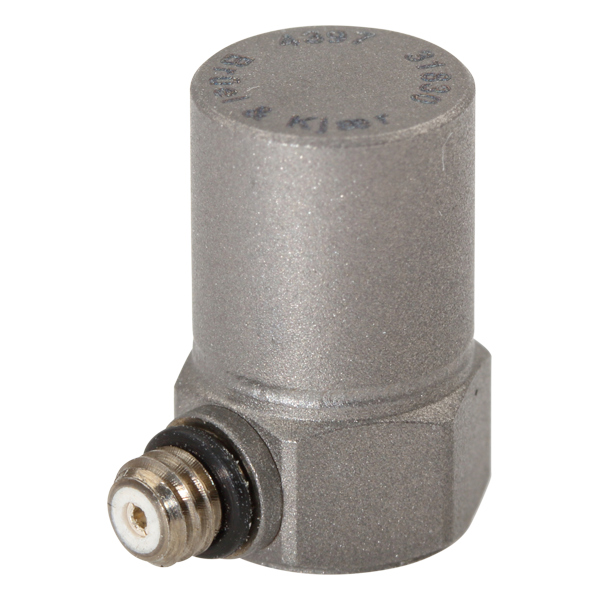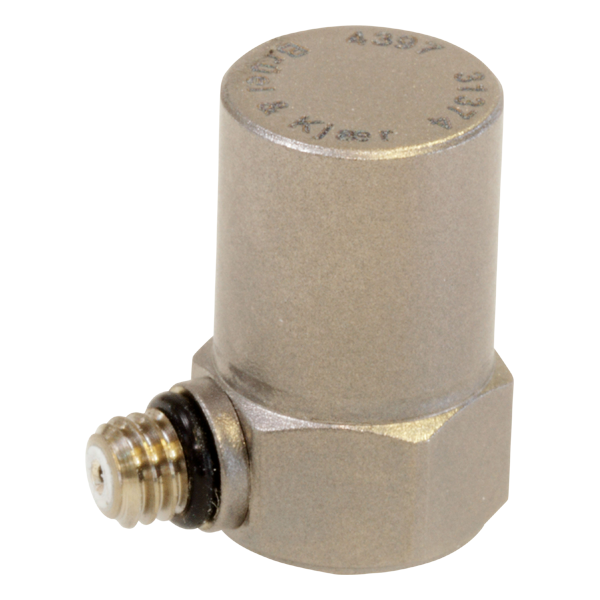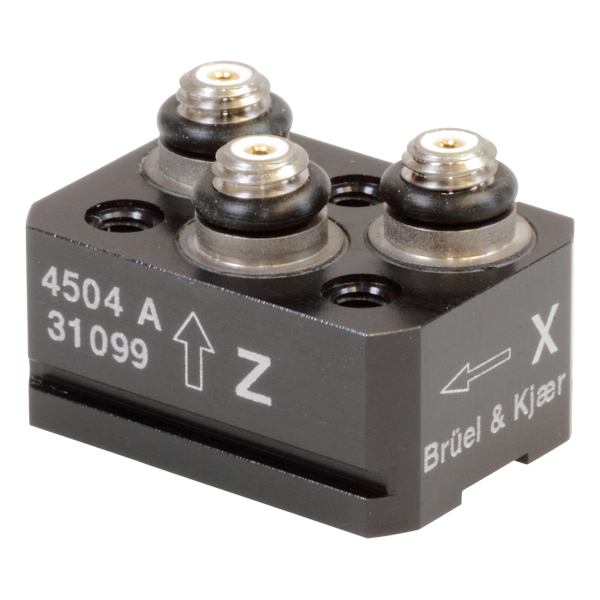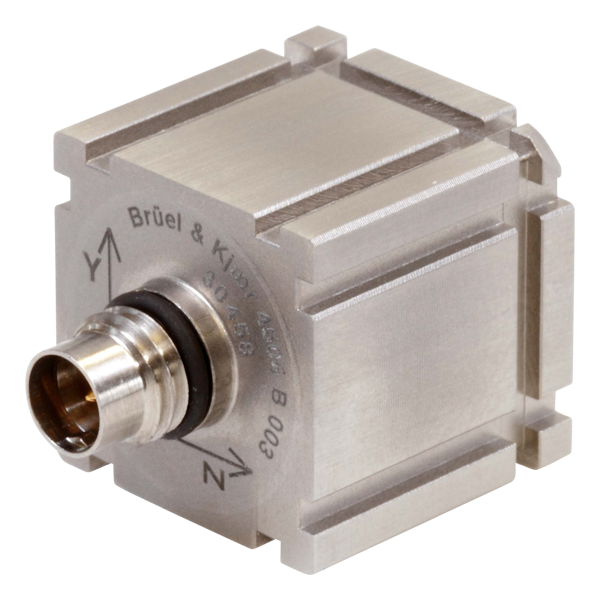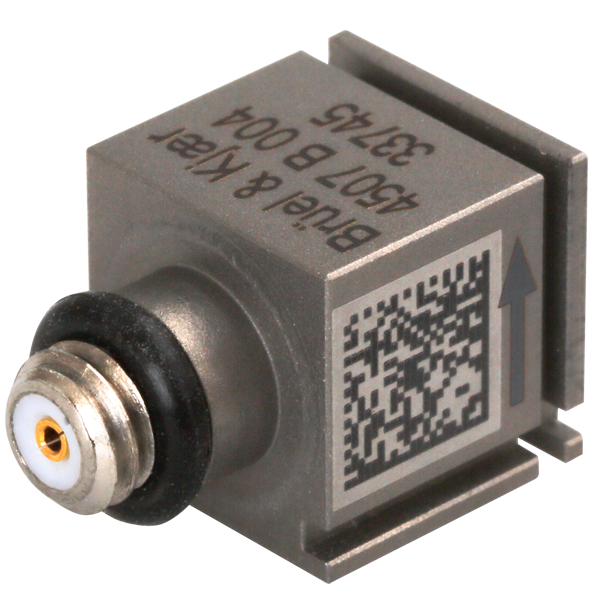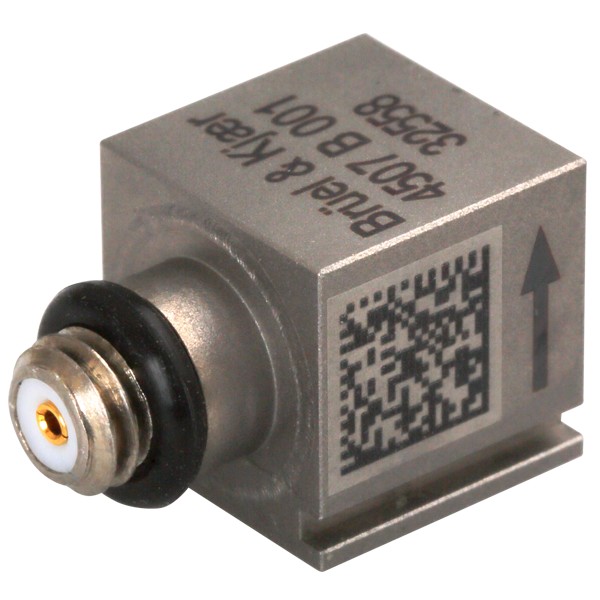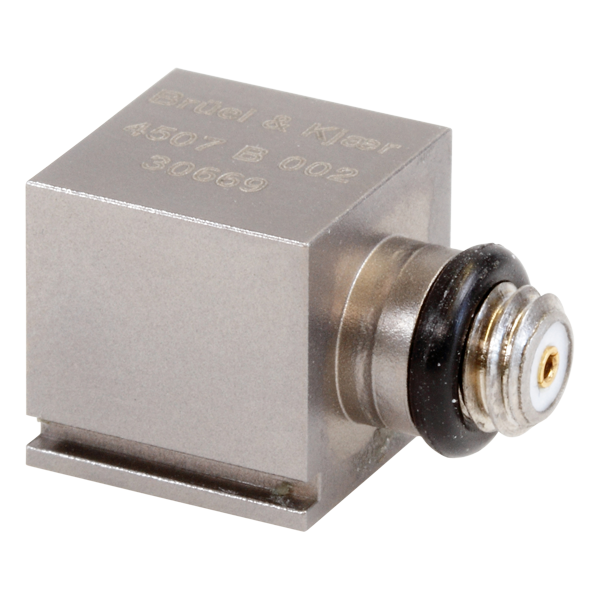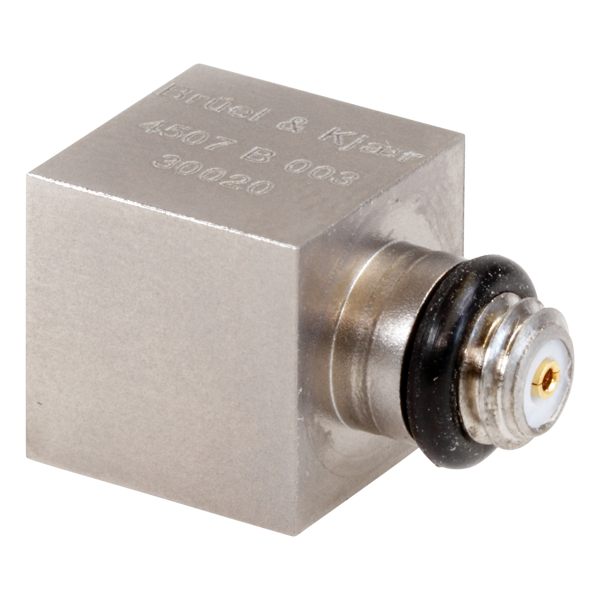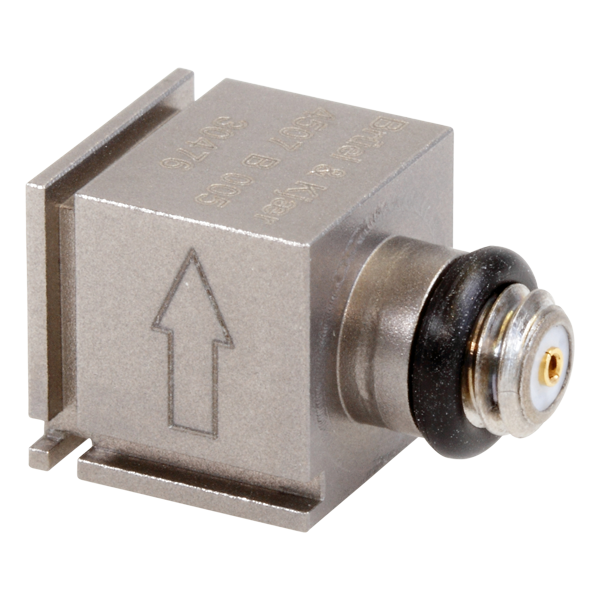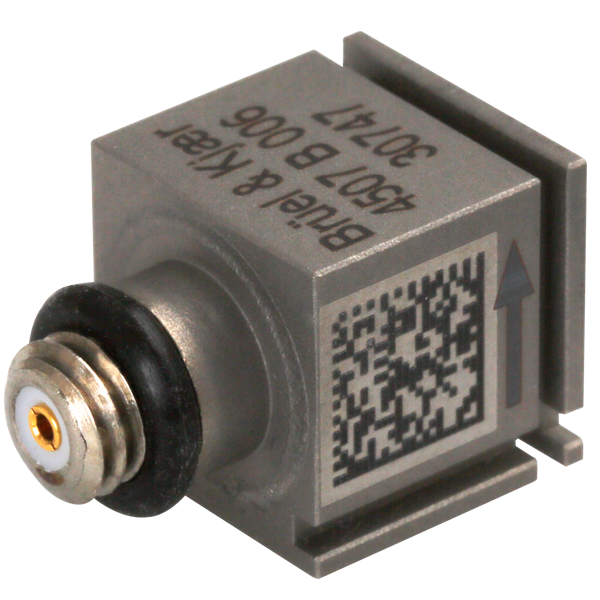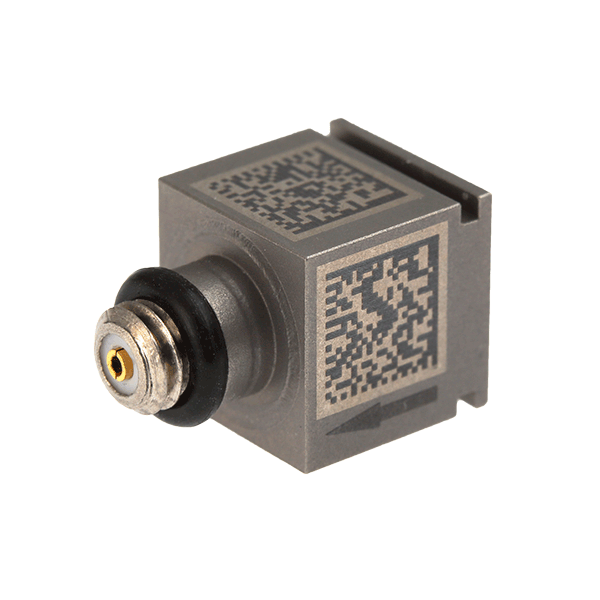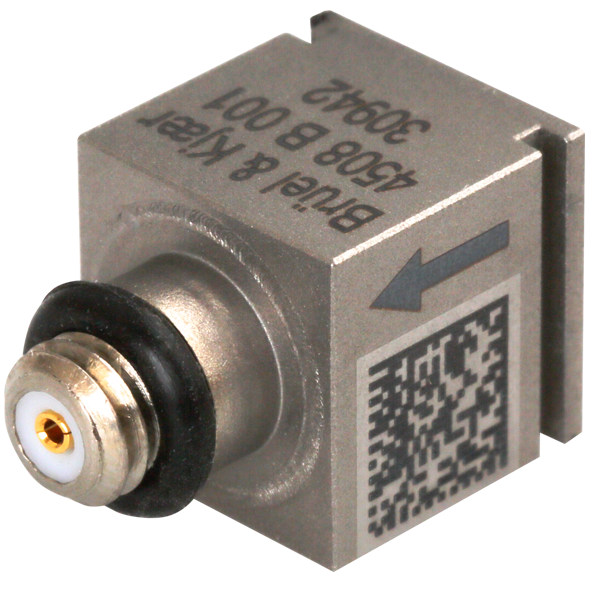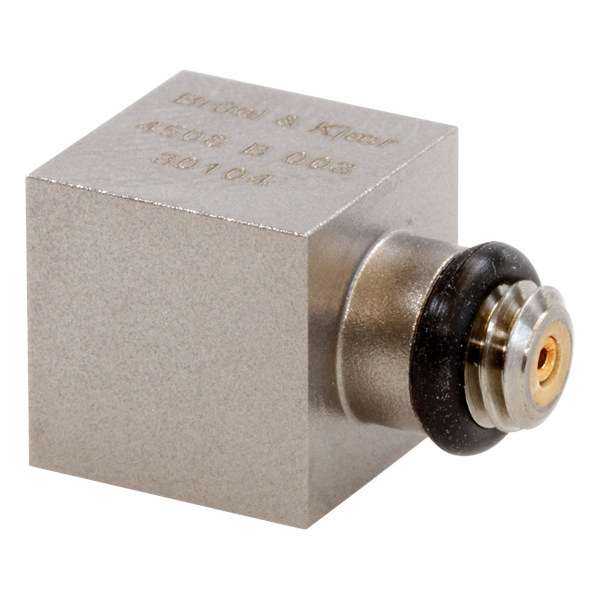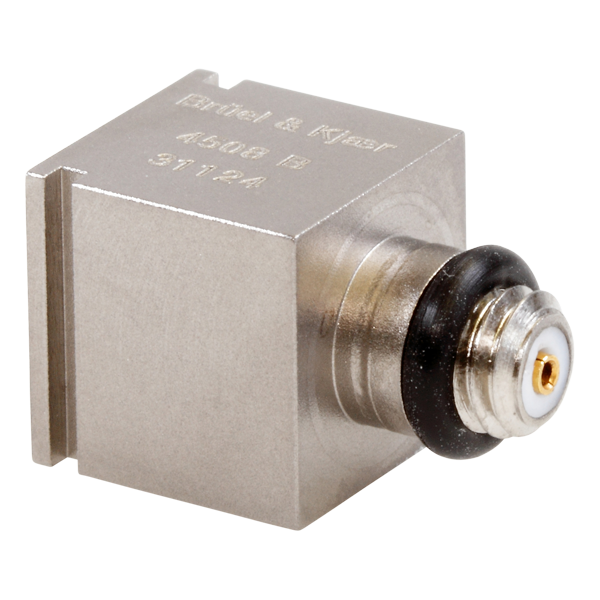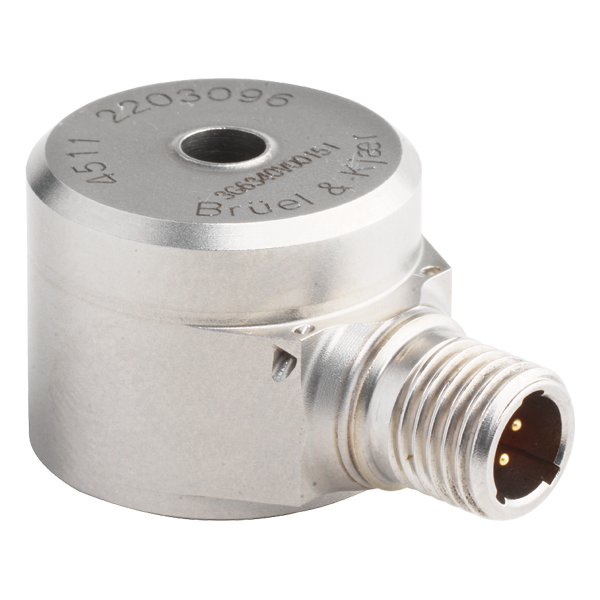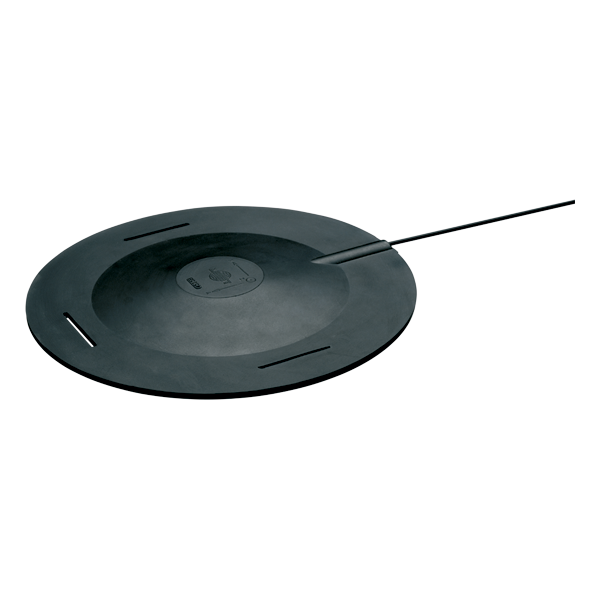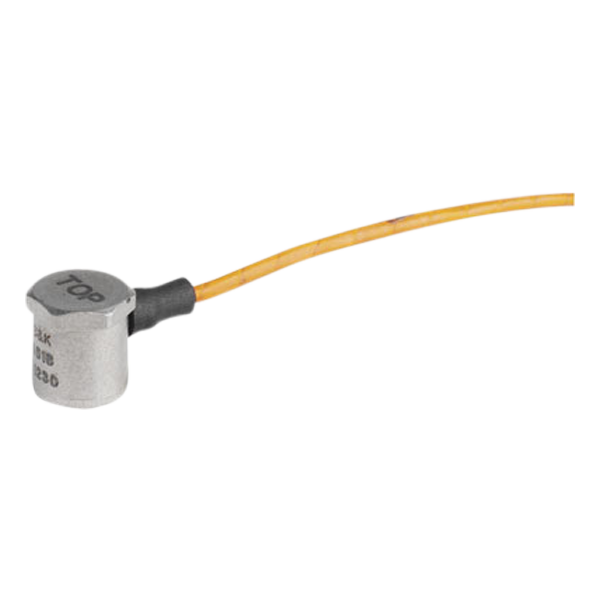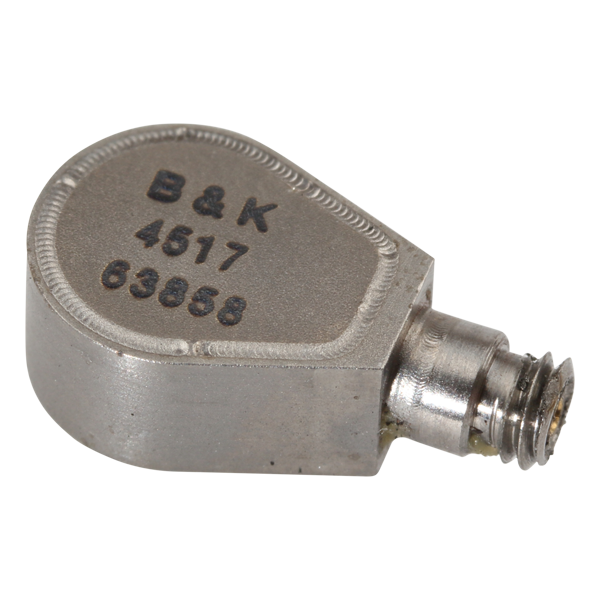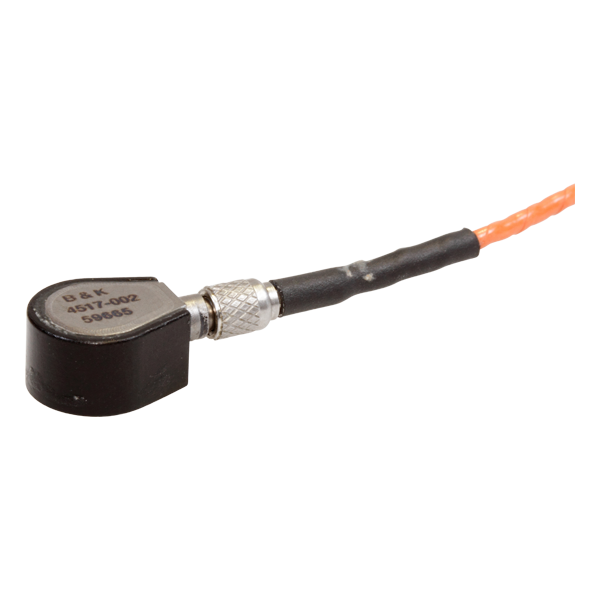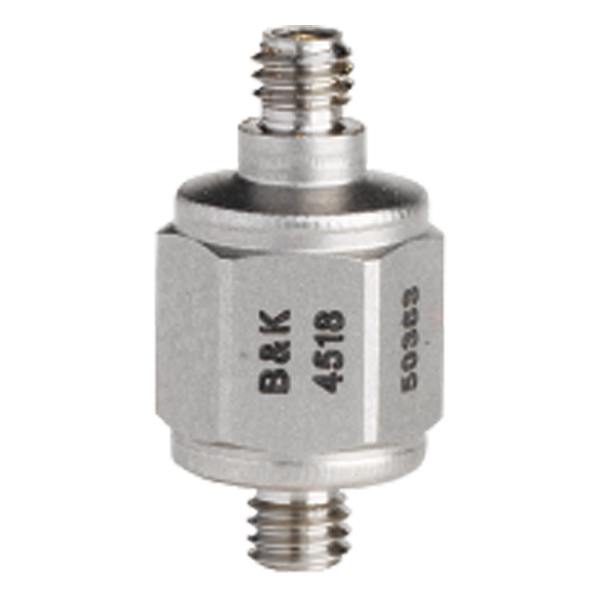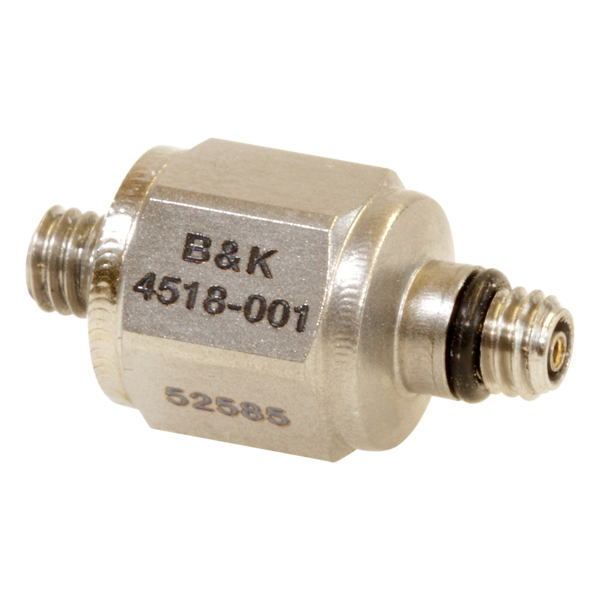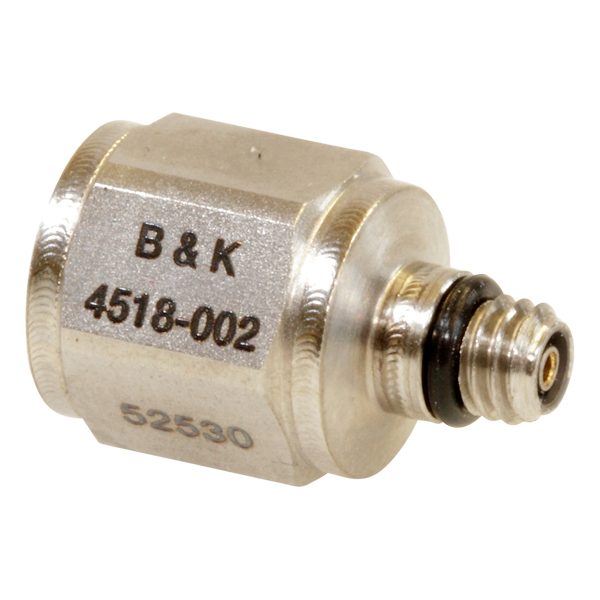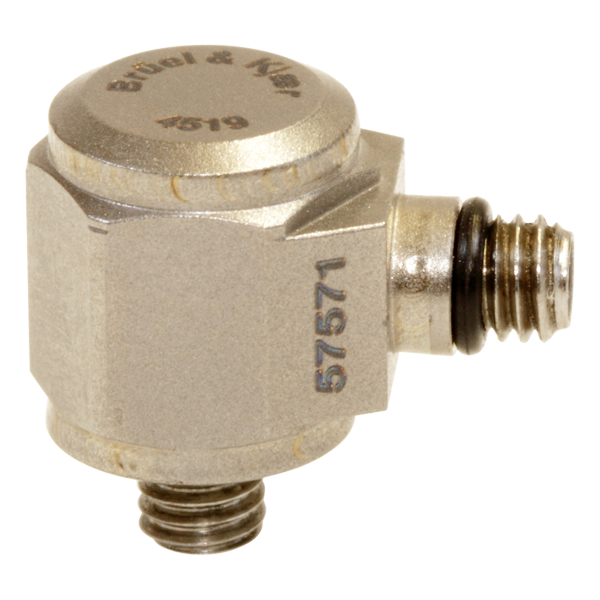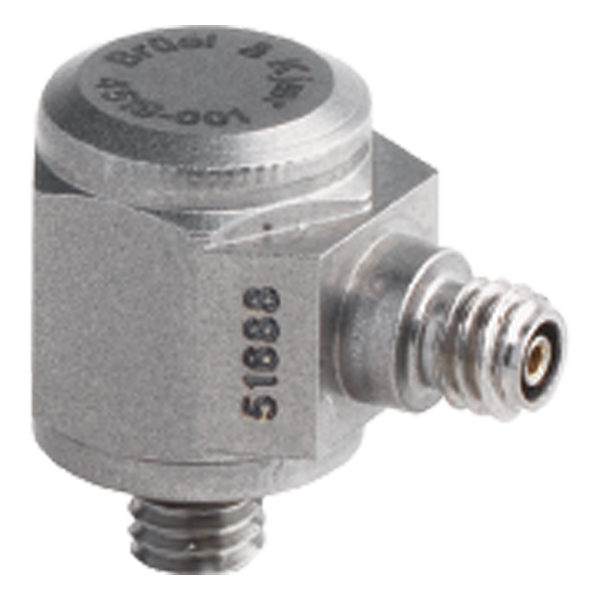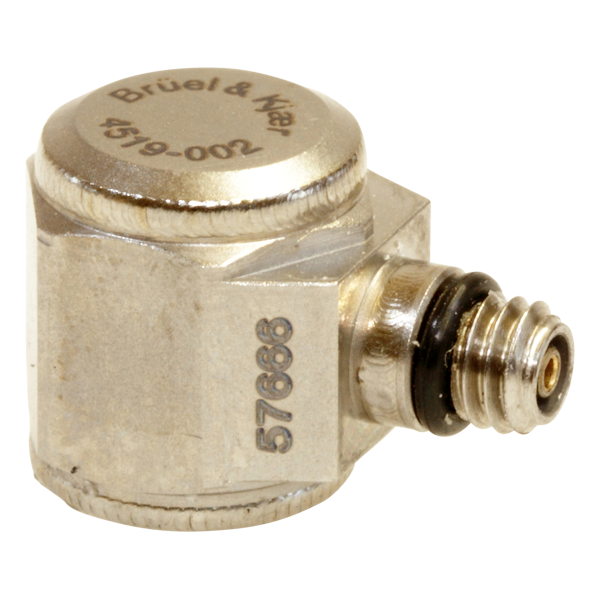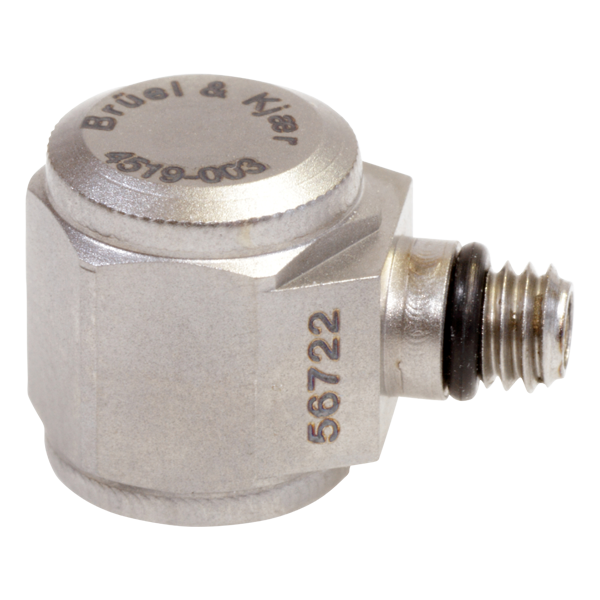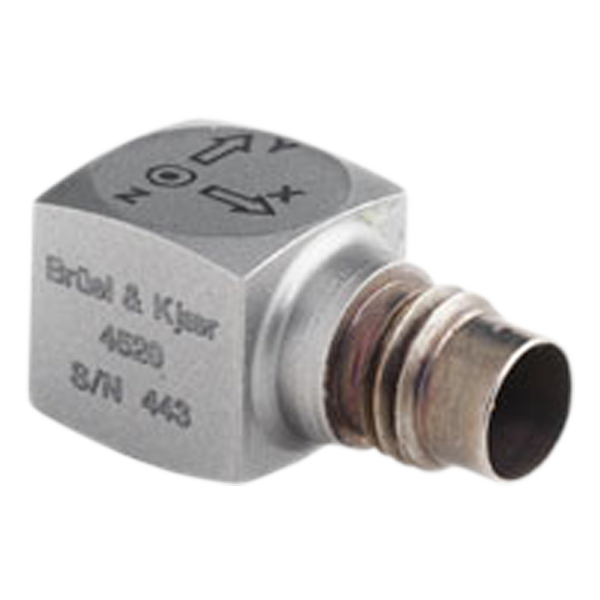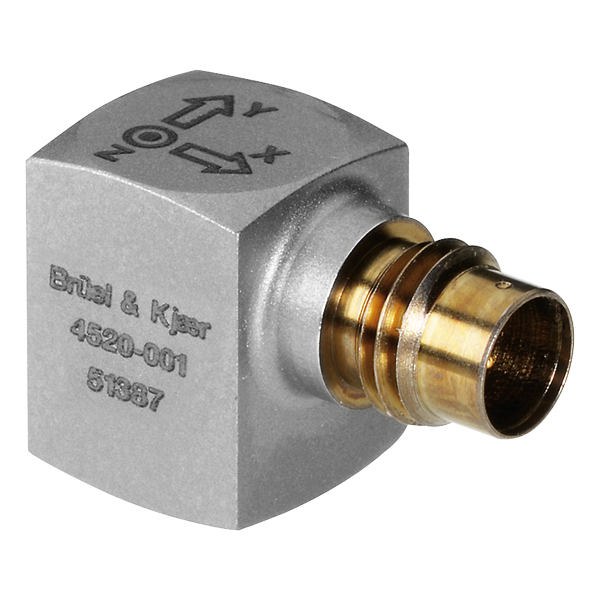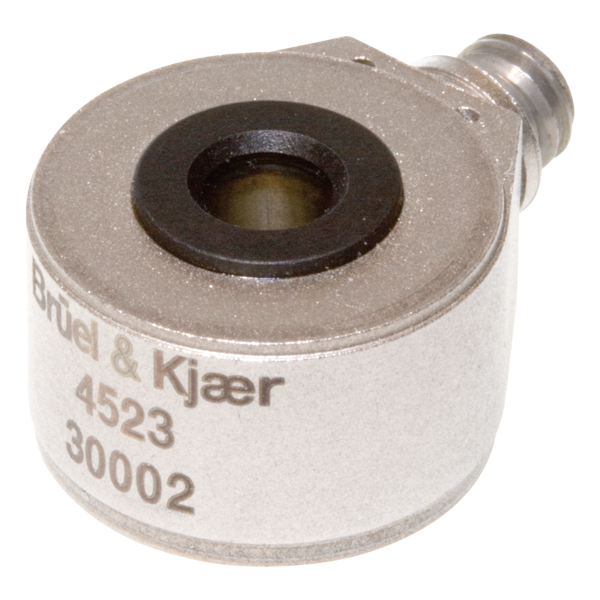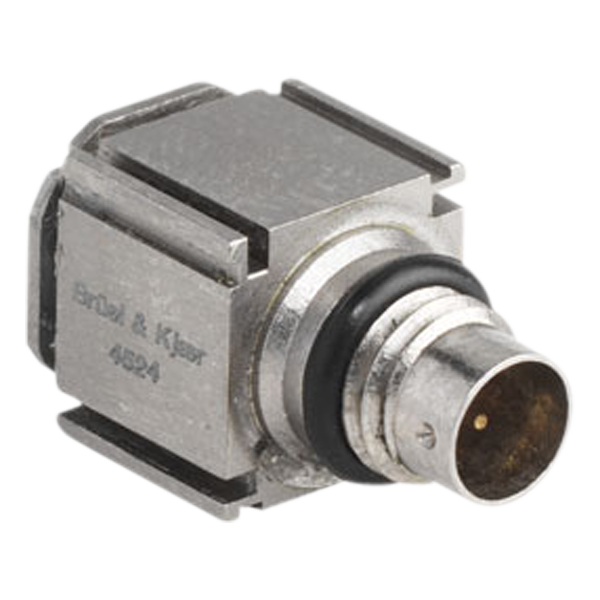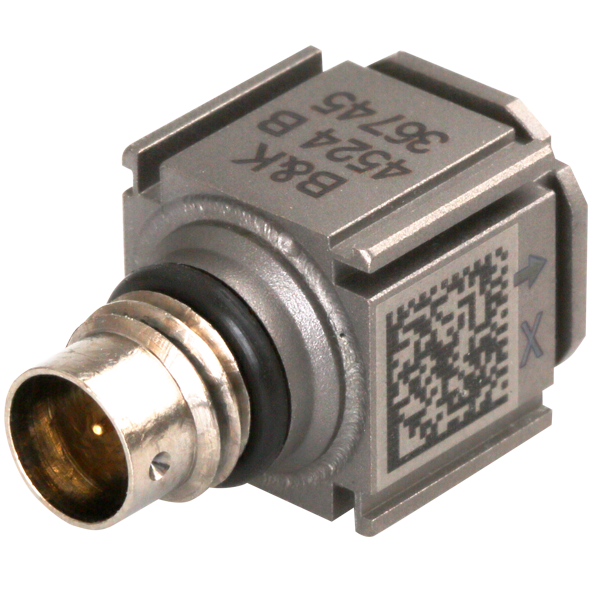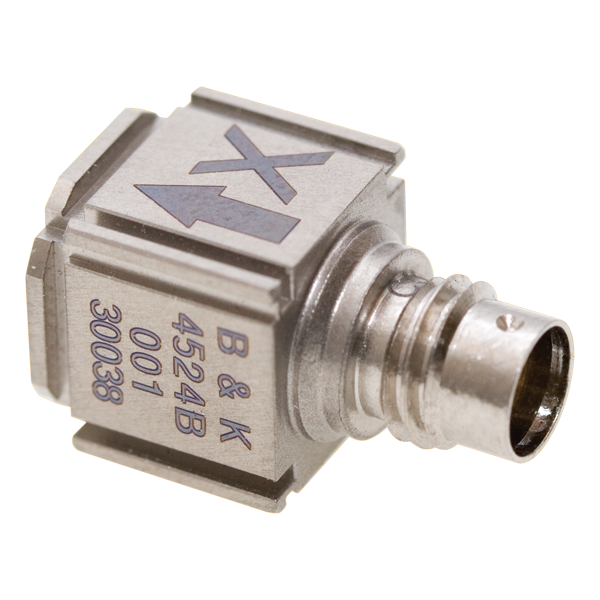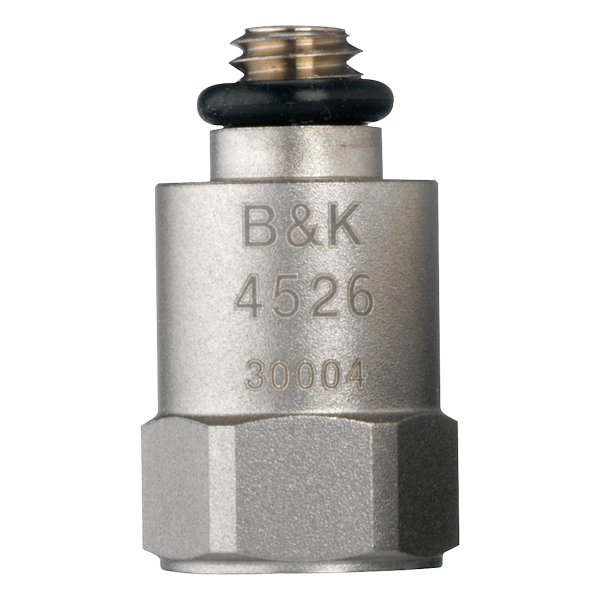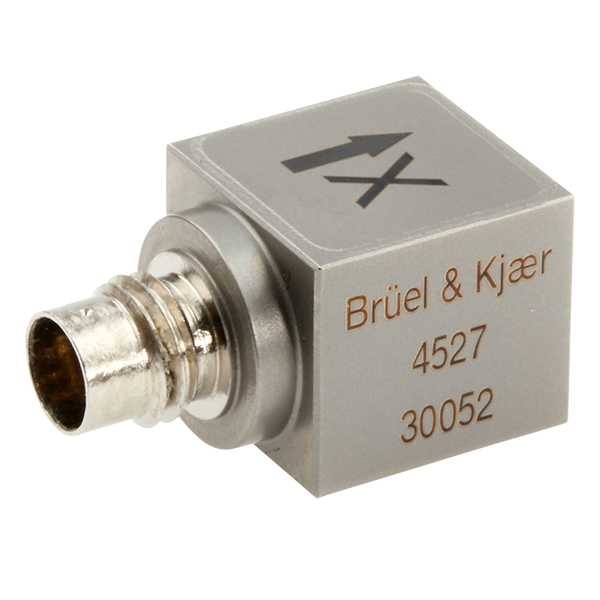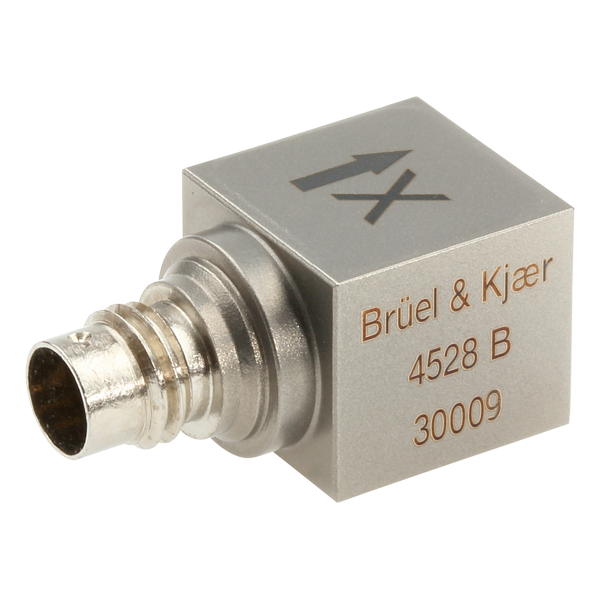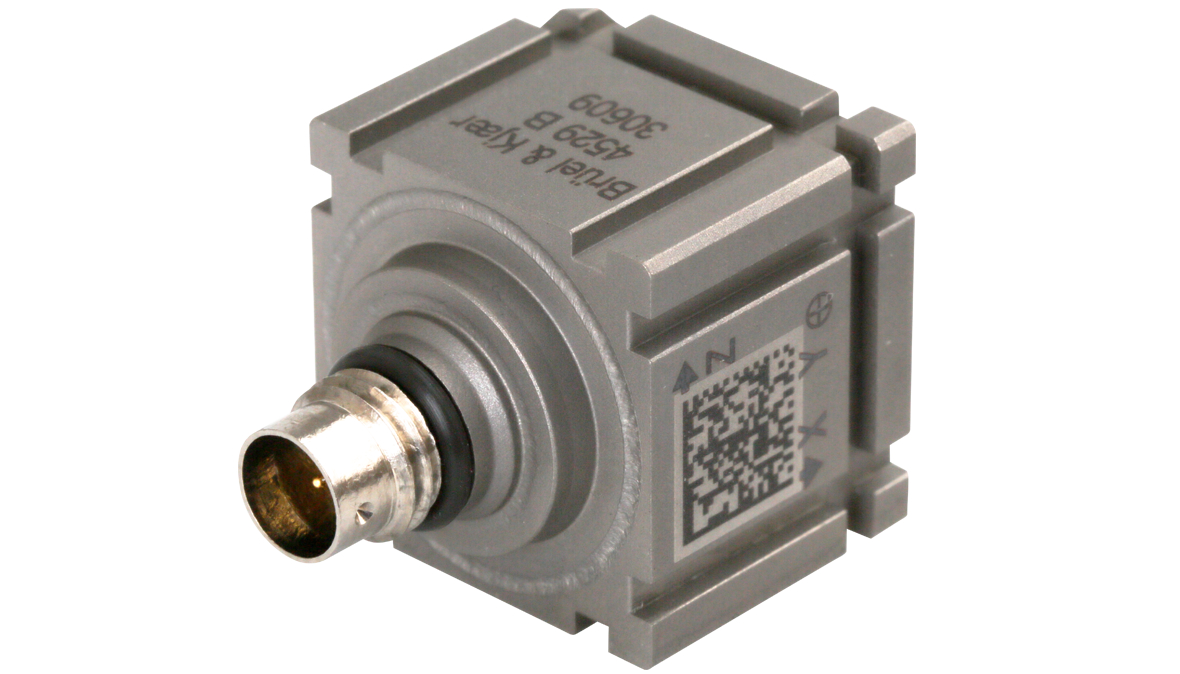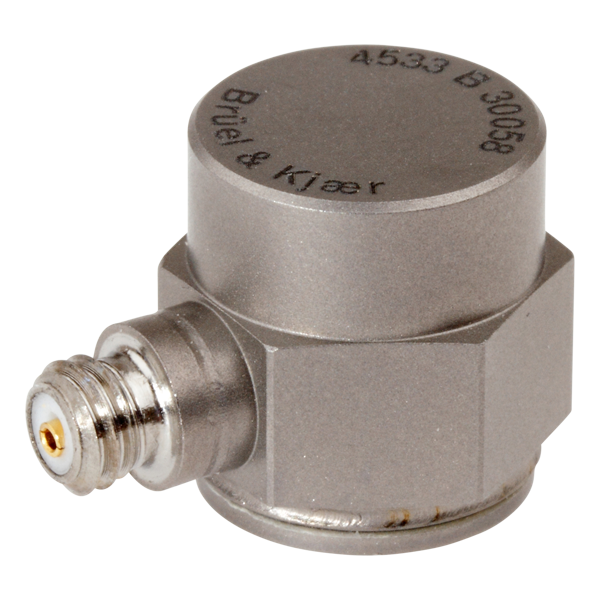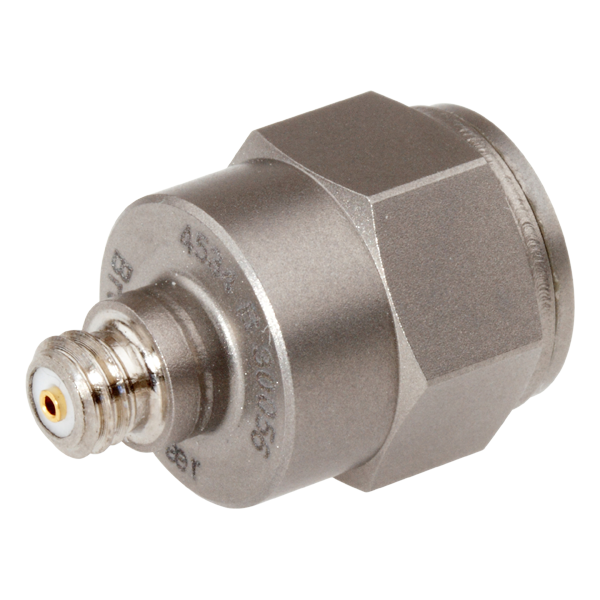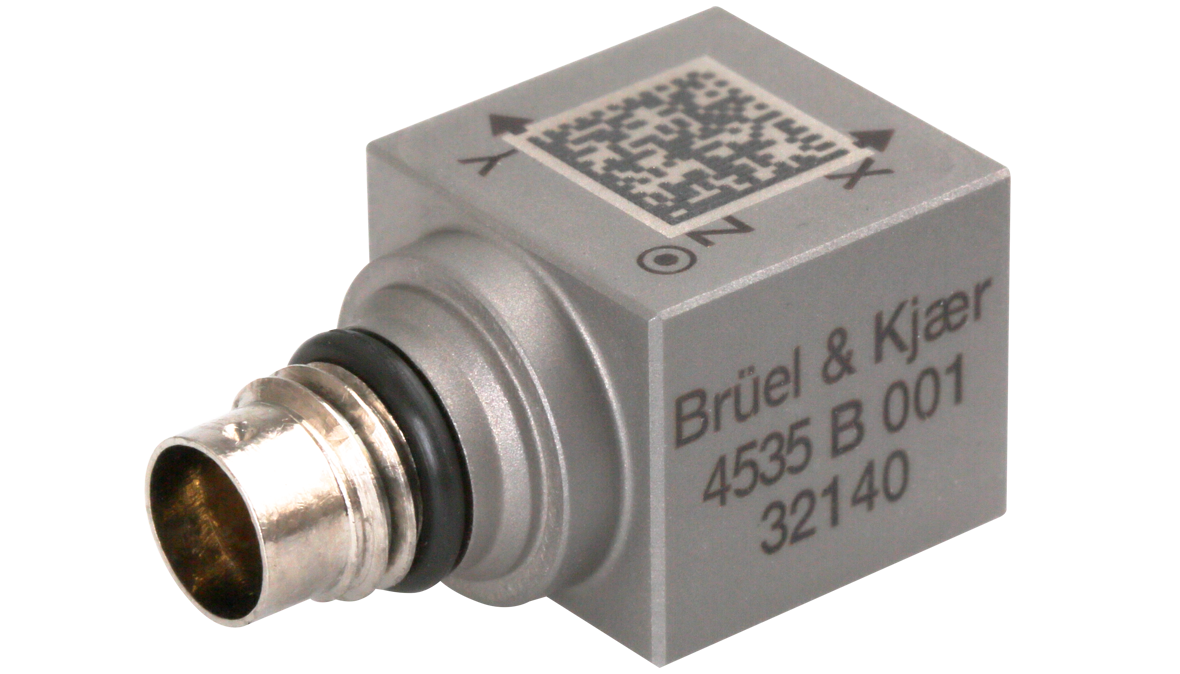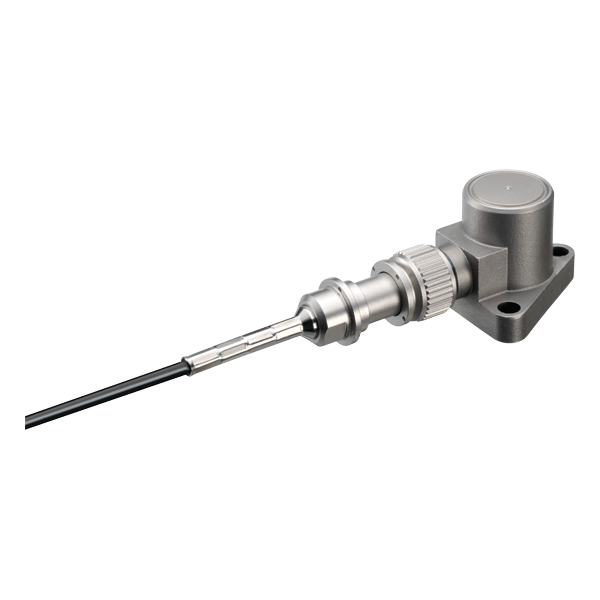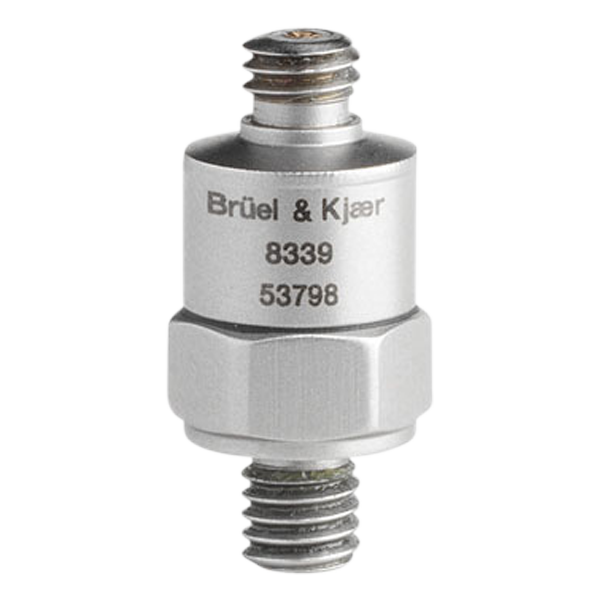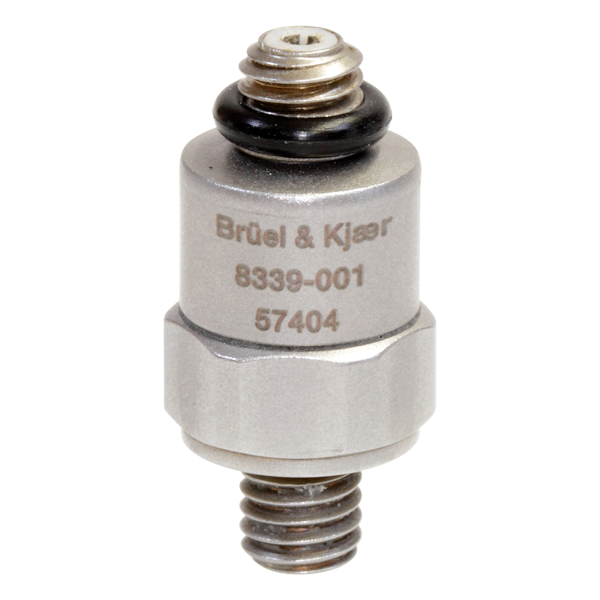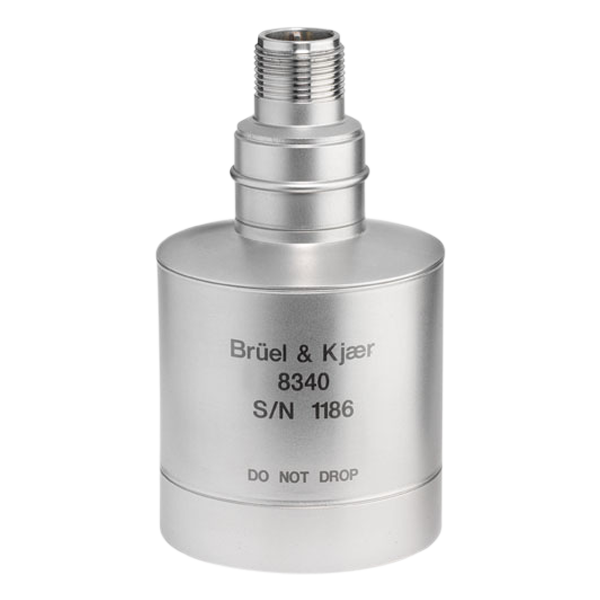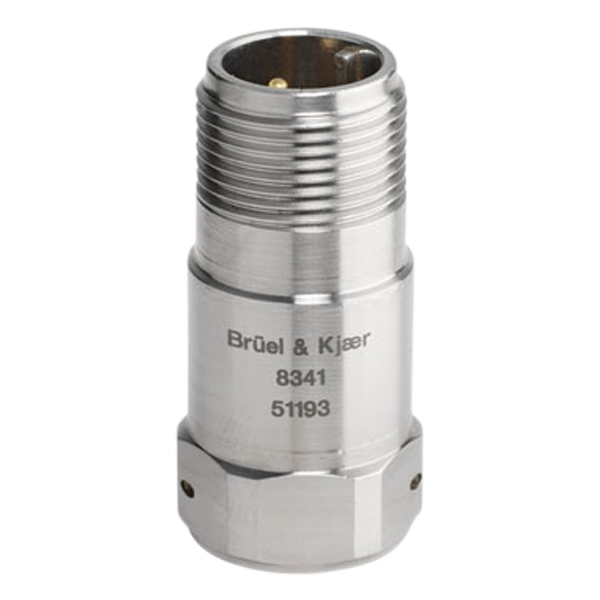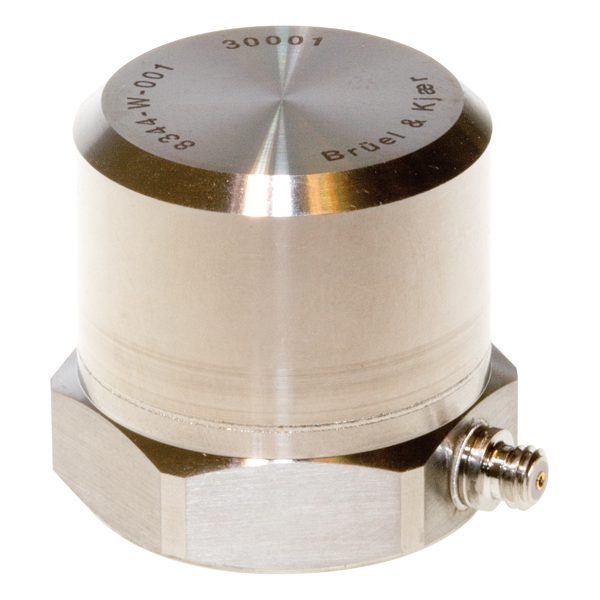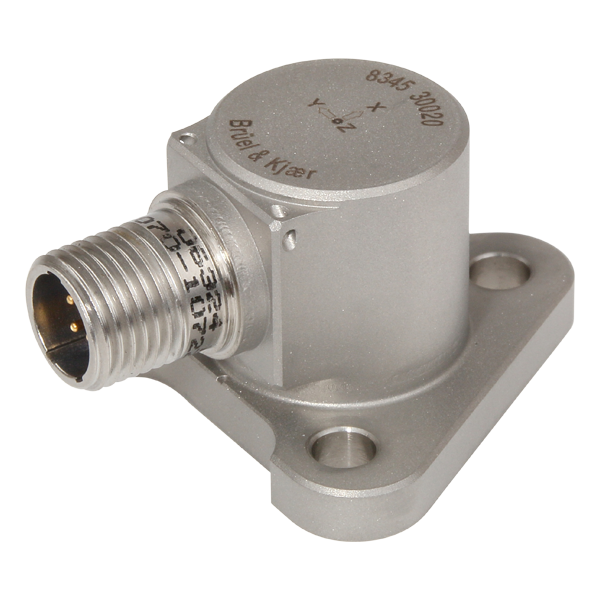Piezoelectric CCLD / IEPE Accelerometers
CCLD accelerometers are PE charge accelerometers (also refereed to as IEPE accelerometers) with integral preamplifiers that have output signals in the form of low impedance voltage output. Most Brüel & Kjær CCCLD accelerometers are hermetically sealed to protect against environmental contamination, they have low susceptibility to radio frequency, electromagnetic radiation and low a impedance output due to the built-in amplifier. This allows the use of inexpensive, and long, coaxial cables.
Definisci la selezione del prodotto
-
TYPE 4394
Type 4394 - accelerometro CCLD piezoelettrico in miniatura, base isolata, cavo incl
Progettato per le misurazioni su strutture leggere in cui si verificano vibrazioni relativamente di alto livello e ad alta frequenza.
- Freq. range :
- Temperature :
- Weight : 2.9 gram
- Sensitivity : 1 mV/ms^-2
- Maximum Operational Level (peak) : 500 g
-
TYPE 4397
Accelerometro in miniatura 1mV/ms-2, con elettronica interna CCLD, compatibile ICP©, incl.
Progettato per le misurazioni su strutture leggere in cui si verificano vibrazioni relativamente di alto livello e ad alta frequenza.
- Freq. range :
- Temperature :
- Weight : 2.4 gram
- Sensitivity : 1 mV/ms^-2
- Maximum Operational Level (peak) : 750 g
-
TYPE 4397-A-001
Type 4397-A - Accelerometro CCLD piezoelettrico in miniatura, connettore laterale, cavo excl.
Progettato per misurazioni di urti e vibrazioni.
- Freq. range :
- Temperature :
- Weight : 2.4 gram
- Sensitivity : 1 mV/ms^-2
- Maximum Operational Level (peak) : 500 g
-
Type 4504-A
Accelerometro triassale piezoelettrico CCLD, cavo excl.
Progettato per misurazioni delle vibrazioni di uso generale.
- Freq. range :
- Temperature :
- Weight : 15 gram
- Sensitivity : 1 mV/ms^-2
- Maximum Operational Level (peak) : 500 g
-
TYPE 4506-B-003
Accelerometro piezoelettrico in miniatura triassiale CCLD, TEDS, 500mV / g, escl. cavo
Progettato per l'analisi strutturale nel settore automobilistico.
- Freq. range :
- Temperature :
- Weight : 18 gram
- Sensitivity : 50 mV/ms^-2
- Maximum Operational Level (peak) : 14 g
-
TYPE 4507-B-003
Accelerometro piezoelettrico CCLD, TEDS, 1mV / g, connettore laterale, 1 slot, escl. cavo
Progettato per misurazioni di analisi modali.
- Freq. range :
- Temperature :
- Weight : 4.8 gram
- Sensitivity : 10 mV/ms^-2
- Maximum Operational Level (peak) : 70 g
-
TYPE 4507-B-001
Accelerometro piezoelettrico CCLD, TEDS, 10mV / g, 1 slot, escl. cav
Progettato per misurazioni di analisi modali.
- Freq. range :
- Temperature :
- Weight : 4.8 gram
- Sensitivity : 1 mV/ms^-2
- Maximum Operational Level (peak) : 700 g
-
TYPE 4507-B-002
Accelerometro piezoelettrico CCLD, TEDS, 1000mV / g, connettore laterale, 1 slot, escl. cavo
Progettato per misurazioni di analisi modali.
- Freq. range :
- Temperature :
- Weight : 4.8 gram
- Sensitivity : 100 mV/ms^-2
- Maximum Operational Level (peak) : 7 g
-
TYPE 4507-B-003
Accelerometro piezoelettrico CCLD, TEDS, 1mV / g, connettore laterale, senza slot, escl. cavo
Progettato per misurazioni di analisi modali.
- Freq. range :
- Temperature :
- Weight : 4.9 gram
- Sensitivity : 10 mV/ms^-2
- Maximum Operational Level (peak) : 70 g
-
TYPE 4507-B-004
Accelerometro CCLD Type 4507-B-004
Progettato per misurazioni di analisi modali.
- Freq. range :
- Temperature :
- Weight : 4.6 gram
- Sensitivity : 10 mV/ms^-2
- Maximum Operational Level (peak) : 70 g
-
TYPE 4507-B-005
Accelerometro piezoelettrico CCLD, TEDS, 1000mV / g, connettore laterale, escl. cavo
Progettato per misurazioni di analisi modali.
- Freq. range :
- Temperature :
- Weight : 4.6 gram
- Sensitivity : 100 mV/ms^-2
- Maximum Operational Level (peak) : 7 g
-
TYPE 4507-B-006
Type 4507-B-006 accelerometro piezoelettrico CCLD, TEDS, 5mV / g, connettore laterale, escl. cavo
Progettato per misurazioni di analisi modali.
- Freq. range :
- Temperature :
- Weight : 46 gram
- Sensitivity : 50 mV/ms^-2
- Maximum Operational Level (peak) : 14 g
-
TYPE 4508-B
Accelerometro piezoelettrico CCLD, TEDS 100mV/g, 4508 slot, connettore superiore, cavo escl.
Progettato per misurazioni di analisi modali.
- Freq. range :
- Temperature :
- Weight : 4.8 gram
- Sensitivity : 10 mV/ms^-2
- Maximum Operational Level (peak) : 70 g
-
TYPE 4508-B-001
Accelerometro piezoelettrico CCLD, TEDS 10 mV/g, 1 slot, connettore superiore, cavo escl.
Progettato per misurazioni di analisi modali.
- Freq. range :
- Temperature :
- Weight : 4.8 gram
- Sensitivity : 1 mV/ms^-2
- Maximum Operational Level (peak) : 700 g
-
TYPE 4508-B-002
Accelerometro piezoelettrico CCLD, TEDS 1000 mV/g, 1 slot, connettore superiore, cavo escl.
Progettato per misurazioni di analisi modali.
- Freq. range :
- Temperature :
- Weight : 4.8 gram
- Sensitivity : 100 mV/ms^-2
- Maximum Operational Level (peak) : 7 g
-
TYPE 4508-B-003
Accelerometro piezoelettrico CCLD, TEDS 100 mV/g, senza slot, connettore superiore, cavo escl.
Progettato per misurazioni di analisi modali.
- Freq. range :
- Temperature :
- Weight : 4.9 gram
- Sensitivity : 10 mV/ms^-2
- Maximum Operational Level (peak) : 71 g
-
TYPE 4508-B-004
Accelerometro piezoelettrico CCLD, TEDS 500 mV/g, 1 slot, connettore superiore, cavo escl.
Progettato per misurazioni di analisi modali.
- Freq. range :
- Temperature :
- Weight : 4.8 gram
- Sensitivity : 50 mV/ms^-2
- Maximum Operational Level (peak) : 14 g
-
MODELLO 4511-001
Progettato per applicazioni di test di volo e misurazione in ambienti difficili.
- Freq. range :
- Temperature :
- Weight : 35 gram
- Sensitivity : 1 mV/ms^-2
- Maximum Operational Level (peak) : 500 g
-
TYPE 4515-B-004
Tipo 100-B - Accelerometro triassiale di seduta CCLD 100 mV/g, TEDS, con cavo integrale da 3 m
Progettato per la misurazione sul campo delle vibrazioni umane dell'intero corpo, nonché per il test e la misurazione di veicoli di trasporto e da lavoro
- Freq. range :
- Temperature :
- Weight : 345 gram
- Sensitivity : 10 mV/ms^-2
- Maximum Operational Level (peak) : 500 g
-
TYPE 4515-B-002
DeltaTron triassico™ accelerometro di seduta 100 mV/g, TEDS, con cavo integrale da 3 m
Progettato per la misurazione sul campo delle vibrazioni umane dell'intero corpo, nonché per il test e la misurazione di veicoli di trasporto e da lavoro
- Freq. range :
- Temperature :
- Weight : 345 gram
- Sensitivity : 10 mV/ms^-2
- Maximum Operational Level (peak) : 500 g
-
TYPE 4516
Accelerometro CCLD in miniatura, 10 mV/g, supporto adesivo, cavo integrale
Progettato per le misurazioni in piccoli spazi e strutture delicate.
- Freq. range :
- Temperature :
- Weight : 1.5 gram
- Sensitivity : 1.02 mV/ms^-2
- Maximum Operational Level (peak) : 500 g
-
TYPE 4517
Accelerometro CCLD a goccia in miniatura, 10 mV/g, cavo incl.
Progettato per le misurazioni in piccoli spazi e strutture delicate.
- Freq. range :
- Temperature :
- Weight : 0.65 gram
- Sensitivity : 1.02 mV/ms^-2
- Maximum Operational Level (peak) : 500 g
-
TYPE 4517-002
Accelerometro CCLD in miniatura a goccia, 10 mV / g, ermetico, incl. Cavo rimovibile da 1 m
Progettato per le misurazioni in piccoli spazi e strutture delicate.
- Freq. range :
- Temperature :
- Weight : 0.7 gram
- Sensitivity : 1.02 mV/ms^-2
- Maximum Operational Level (peak) : 500 g
-
TYPE 4518
Progettato per le misurazioni in piccoli spazi e strutture delicate.
- Freq. range :
- Temperature :
- Weight : 1.5 gram
- Sensitivity : 1.02 mV/ms^-2
- Maximum Operational Level (peak) : 500 g
-
TYPE 4518-001
Progettato per le misurazioni in piccoli spazi e strutture delicate.
- Freq. range :
- Temperature :
- Weight : 1.5 gram
- Sensitivity : 10.2 mV/ms^-2
- Maximum Operational Level (peak) : 50 g
-
TYPE 4518-002
Progettato per le misurazioni in piccoli spazi e strutture delicate.
- Freq. range :
- Temperature :
- Weight : 1.45 gram
- Sensitivity : 1.02 mV/ms^-2
- Maximum Operational Level (peak) : 500 g
-
TYPE 4519
Progettato per le misurazioni in piccoli spazi e strutture delicate.
- Freq. range :
- Temperature :
- Weight : 1.6 gram
- Sensitivity : 1.02 mV/ms^-2
- Maximum Operational Level (peak) : 500 g
-
TYPE 4519-001
Progettato per le misurazioni in piccoli spazi e strutture delicate.
- Freq. range :
- Temperature :
- Weight : 1.6 gram
- Sensitivity : 10.2 mV/ms^-2
- Maximum Operational Level (peak) : 50 g
-
TYPE 4519-002
Progettato per le misurazioni in piccoli spazi e strutture delicate.
- Freq. range :
- Temperature :
- Weight : 1.5 gram
- Sensitivity : 1.02 mV/ms^-2
- Maximum Operational Level (peak) : 500 g
-
TYPE 4519-003
Progettato per le misurazioni in piccoli spazi e strutture delicate.
- Freq. range :
- Temperature :
- Weight : 1.5 gram
- Sensitivity : 10.2 mV/ms^-2
- Maximum Operational Level (peak) : 50 g
-
TYPE 4520
Accelerometro CCLD triassiale cubico in miniatura, 10 mV/g
Progettato per le misurazioni su strutture luminose.
- Freq. range :
- Temperature :
- Weight : 2.9 gram
- Sensitivity : 1.02 mV/ms^-2
- Maximum Operational Level (peak) : 500 g
-
TYPE 4520-001
Accelerometro cubico triassiale cubico in miniatura, 10 mV / g, foro filettato M3
Progettato per le misurazioni su strutture luminose.
- Freq. range :
- Temperature :
- Weight : 4 gram
- Sensitivity : 1.02 mV/ms^-2
- Maximum Operational Level (peak) : 500 g
-
TYPE 4523
Type 4523 - accelerometro piezoelettrico
Progettato per il monitoraggio dell'utilizzo della stato dei riduttori sugli elicotteri.
- Freq. range :
- Temperature :
- Weight : 13.3 gram
- Sensitivity : 1 mV/ms^-2
- Maximum Operational Level (peak) : 500 g
-
TYPE 4524
Accelerometro piezoelettrico CCLD triassiale
Progettato per misurazioni di analisi strutturale.
- Freq. range :
- Temperature :
- Weight : 4.4 gram
- Sensitivity : 10 mV/ms^-2
- Maximum Operational Level (peak) : 50 g
-
TYPE 4524-B
Accelerometro piezoelettrico CCLD triassiale, TEDS
Progettato per misurazioni di analisi strutturale.
- Freq. range :
- Temperature :
- Weight : 4.4 gram
- Sensitivity : 10 mV/ms^-2
- Maximum Operational Level (peak) : 50 g
-
TYPE 4524-B-001
Accelerometro CCLD triassiale cubico, TEDS, 1 mV/ms-2, cavo escl.
Progettato per misurazioni di analisi strutturale.
- Freq. range :
- Temperature :
- Weight : 4.4 gram
- Sensitivity : 10 mV/g
- Maximum Operational Level (peak) : 500 g
-
TYPE 4526
Accelerometro CCLD, 70 mV/g, 70 g di gamma, connettore superiore, cavo escl.
Progettato per l'uso con funzionamento continuo ad alta temperatura e con una tensione di distorsione stabile, ad esempio su attrezzature ausiliarie a turbina a gas.
- Freq. range :
- Temperature :
- Weight : 5 gram
- Sensitivity : 10 mV/ms^-2
- Maximum Operational Level (peak) : 70 g
-
TYPE 4526-001
Accelerometro CCLD, 700 mV/g, 70 g di gamma, connettore superiore, cavo escl.
Progettato per l'uso con funzionamento continuo ad alta temperatura e con una tensione di distorsione stabile, ad esempio su attrezzature ausiliarie a turbina a gas.
- Freq. range :
- Temperature :
- Weight : 5 gram
- Sensitivity : 1 mV/ms^-2
- Maximum Operational Level (peak) : 714 g
-
TYPE 4527
Progettato per funzionare in modo continuo a 180 gradi centigradi al fine di soddisfare i requisiti ambientali più severi.
- Freq. range :
- Temperature :
- Weight : 6 gram
- Sensitivity : 1 mV/ms^-2
- Maximum Operational Level (peak) : 714 g
-
TYPE 4528-B
accelerometro triassiale 10 mV/g w TEDS
Progettato per funzionare in modo continuo a 165 gradi centigradi al fine di soddisfare i requisiti ambientali più severi.
- Freq. range :
- Temperature :
- Weight : 6 gram
- Sensitivity : 1 mV/ms^-2
- Maximum Operational Level (peak) : 714 g
-
TYPE 4529-B
Con un'elevata gamma dinamica, type 4529 copre un'ampia gamma di applicazioni, tra cui i test su strada e modalità.
- Freq. range :
- Temperature :
- Weight : 14.5 gram
- Sensitivity : 10 mV/ms^-2
- Maximum Operational Level (peak) : 71 g
-
TYPE 4529-B-001
Con un'elevata gamma dinamica, type 4529-B-001 copre un'ampia serie di applicazioni, tra cui i test su strada e modali.
- Freq. range :
- Temperature :
- Weight : 14.5 gram
- Sensitivity : 1 mV/ms^-2
- Maximum Operational Level (peak) : 710 g
-
TYPE 4533-B
Progettato per un'ampia gamma di frequenze, basso rumore e bassa sensibilità ai fattori ambientali.
- Freq. range :
- Temperature :
- Weight : 8.6 gram
- Sensitivity : 1 mV/ms^-2
- Maximum Operational Level (peak) : 714 g
-
TYPE 4534-B
Accelerometro CCLD, 1 mV/ms^-2
Progettato per un'ampia gamma di frequenze, basso rumore e bassa sensibilità ai fattori ambientali.
- Freq. range :
- Temperature :
- Weight : 8.6 gram
- Sensitivity : 1 mV/ms^-2
- Maximum Operational Level (peak) : 714 g
-
TYPE 4534-B-001
Accelerometro CCLD, 10 mV/ms^-2
Progettato per un'ampia gamma di frequenze, basso rumore e bassa sensibilità ai fattori ambientali.
- Freq. range :
- Temperature :
- Weight : 8.6 gram
- Sensitivity : 10 mV/ms^-2
- Maximum Operational Level (peak) : 71 g
-
TYPE 4534-B-002
Accelerometro CCLD, 50 mV/ms^-2
Questo accelerometro è progettato per un'ampia gamma di frequenze, basso rumore e bassa sensibilità ai fattori ambientali.
- Freq. range :
- Temperature :
- Weight : 8.6 gram
- Sensitivity : 50 mV/ms^-2
- Maximum Operational Level (peak) : 14 g
-
TYPE 4535-B
Accelerometro CCLD triassiale per uso generico, TEDS, 9.8 mV/g, cavo escl
Progettato per semplificare i test coprendo la maggior parte delle diverse esigenze di un moderno laboratorio con un unico sensore.
- Freq. range :
- Temperature :
- Weight : 6 gram
- Sensitivity : 1 mV/ms^-2
- Maximum Operational Level (peak) : 714 g
-
TYPE 4535-B-001
Accelerometro CCLD triassiale per uso generico, TEDS, 98 mV/g, cavo escl
Progettato per semplificare i test coprendo la maggior parte delle diverse esigenze di un moderno laboratorio con un unico sensore. Type 4535-B-001 è inciso con un codice di matrice di dati per semplificare e automatizzare le configurazioni di test multicanale.
- Freq. range :
- Temperature :
- Weight : 6 gram
- Sensitivity : 10 mV/ms^-2
- Maximum Operational Level (peak) : 71 g
-
TYPE 8324-G
Accelerometri piezoelettrici Type 8324-G e 8324-G-100
Progettato per le misurazioni in ambienti industriali difficili.
- Freq. range :
- Temperature :
- Weight : 91 gram
- Sensitivity : 1 mV/ms^-2
- Maximum Operational Level (peak) : 2000 g
-
TYPE 8339
Accelerometro CCLD, .25 mV/g, connettore superiore, escl. cavo
Progettato per la misurazione di vibrazioni continue di altissimo livello, shock meccanici e piroshock.
- Freq. range :
- Temperature :
- Weight : 5.8 gram
- Sensitivity : 0.025 mV/ms^-2
- Maximum Operational Level (peak) : 20000 g
-
TYPE 8339-001
Accelerometro CCLD, .1 mV/g, connettore superiore, escl. cavo
Progettato per la misurazione di vibrazioni continue di altissimo livello, shock meccanici e piroshock.
- Freq. range :
- Temperature :
- Weight : 5.8 gram
- Sensitivity : 0.01 mV/ms^-2
- Maximum Operational Level (peak) : 50000 g
-
TYPE 8340
Accelerometro sismico CCLD, 10 V/g, connettore superiore, escl. cavo
Progettato con un'elevata sensibilità e un eccellente rapporto segnale-rumore per misurazioni su grandi strutture a frequenze molto basse e per misurare l'attività sismica di basso livello.
- Freq. range :
- Temperature :
- Weight : 775 gram
- Sensitivity : 1 mV/ms^-2
- Maximum Operational Level (peak) : 0.5 g
-
TYPE 8341
Accelerometro CCLD industriale, 100 mV/g, connettore superiore, ermetico, escl. cavo
Progettato per il controllo delle vibrazioni attive in volo su rotore e aerei ad ala fissa e applicazioni industriali.
- Freq. range :
- Temperature :
- Weight : 41 gram
- Sensitivity : 10 mV/ms^-2
- Maximum Operational Level (peak) : 50 g
-
TYPE 8344
Accelerometro piezoelettrico, TEDS
Progettato per misurazioni di basso livello, basso rumore e alta sensibilità.
- Freq. range :
- Temperature :
- Weight : 176 gram
- Sensitivity : 250 mV/ms^-2
- Maximum Operational Level (peak) : 2.6 g
-
TYPE 8345
Accelerometro CCLD triassiale Type 8345
Progettato per funzionare in ambienti difficili con un robusto Glenair a 4 pin® connettore di serie 800 per applicazioni industriali.
- Freq. range :
- Temperature :
- Weight : 40 gram
- Sensitivity : 98 mV/g
- Maximum Operational Level (peak) : 1000 µg
What are CCLD Accelerometers?
CCLD is a generic name identifying accelerometers (and is also refereed to as IEPE accelerometers) and CCLD Signal conditioning equipment that operate on a constant-current power supply and give output signals in the form of voltage modulation on the power supply line.
CCLD variants have built-in, low-noise preamplifiers that are made using thick-film technology. The preamplifiers comprise ASICs (application-specific integrated circuit) including a special reference voltage that ensures very stable bias voltage over the entire operating temperature range.
An obvious advantage of using CCLD equipment is that it allows you to use inexpensive cables.
The low-output impedance allows the use of long cables for connection between the accelerometer and the data acquisition hardware, ie. our Input DAQ Module (LAN-XI Type 3050).
Cables and Connectors for CCLD
For general, non-critical use, the following cables are recommended for use with CCLD variants:
- Single-screened Accelerometer Cable (AO-0463)
Flexible cable with coaxial connectors (male, 10 – 32 UNF), – 20, max. temperature: +80 °C (– 4 to +176 °F) - Coaxial Accelerometer Cable (AO-0531)
Flexible cable with coaxial connectors (male, 10 – 32 UNF) to BNC (male) connectors, max. temperature: –20 to +80 °C (– 4 to +176 °F) - Low-Noise Accelerometer Cable (AO-1382)
Double-screened cable with coaxial connectors (male, 10– 32 UNF), max. temperature: 250 °C (482 °F)
In order to distinguish individual accelerometers in a multichannel measurement setup, numbered cable markers (UA-1243) are available to fit cables that are 1.6 mm in diameter and coloured cable markers (UA-1244) are available to fit cables that are 1.9 to 2.2 mm in diameter.
Maximum Cable Length for CCLD
The maximum output voltage of a CCLD accelerometer when driving long cables depends on the supply current at which it is operating, and on the capacitive load due to the connecting cable.
The maximum cable length in metres (for distortion ≤1%) is given by:
L = 140000 x ls – 1 f x VoxCm
where:
Is = supply current (mA)
f = frequency (kHz)
Vo = output voltage (Vpeak)
Cm = cable capacitance (pF/m)

Parla oggi stesso con il tuo rappresentante locale Brüel & Kjær!

